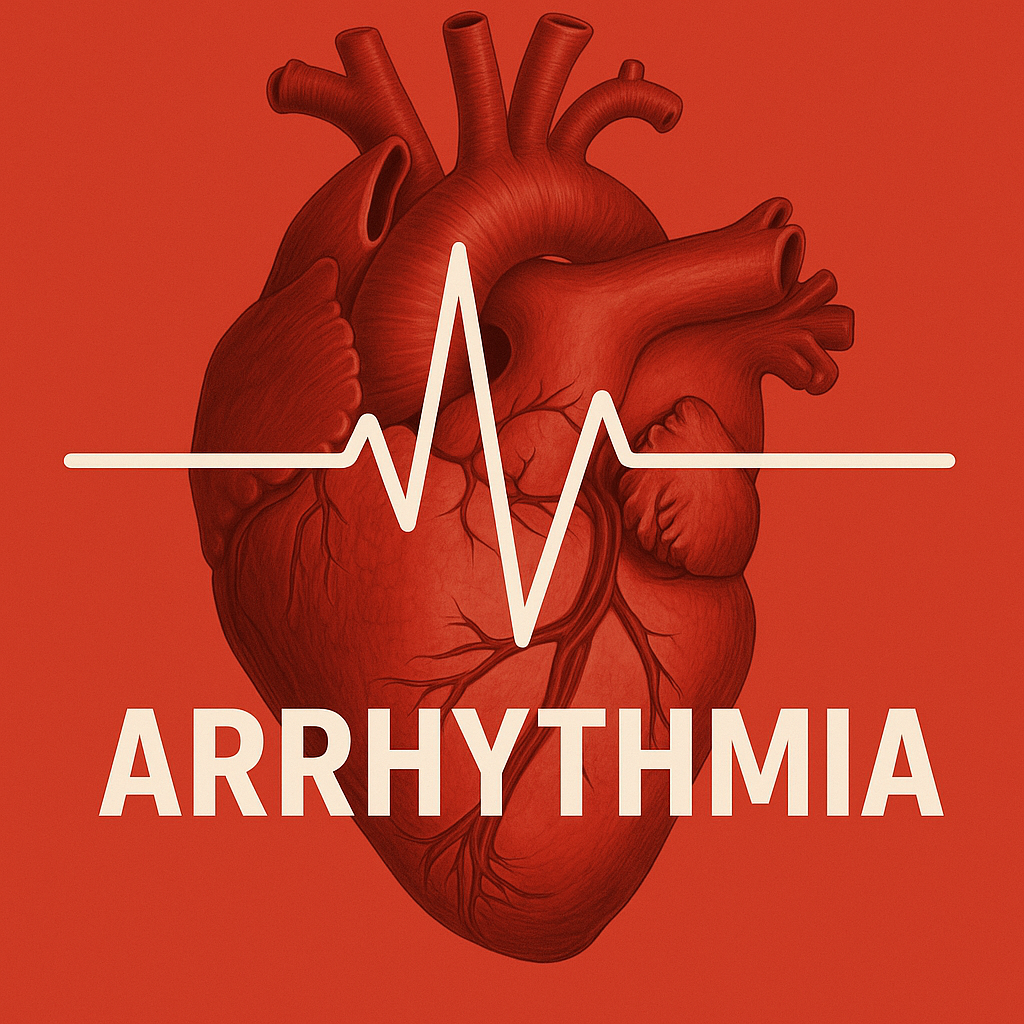Heart Rhythm Disorders: More Than Just Palpitations


The human heart is designed to beat in a steady, rhythmic pattern, ensuring blood reaches every organ with precision. When this rhythm is disturbed, it is known as an arrhythmia or heart rhythm disorder. Many people mistake arrhythmias as “just palpitations,” but the reality is much broader. Some arrhythmias are harmless and self-limiting, while others may be life-threatening and demand immediate medical attention. As physicians, we must recognize that rhythm disorders are not only a cardiac issue but also a systemic warning that requires a holistic view of the patient.
For General Readers
Heart rhythm disorders can manifest as fluttering in the chest, skipped beats, a racing heart, or even fainting spells. While anxiety, caffeine, or lack of sleep can sometimes trigger palpitations, persistent or severe symptoms should never be ignored. Some arrhythmias, like atrial fibrillation, increase the risk of stroke. Others, like ventricular tachycardia, can be fatal if untreated. Therefore, it is important for the general public to understand that not every palpitation is innocent—and not every arrhythmia feels obvious. Silent arrhythmias can exist, detectable only through medical tests.
For Medical Students
At the foundational level, arrhythmias arise from abnormalities in impulse generation (automaticity), impulse conduction (blocks, reentry circuits), or a combination of both. Students must learn the classification broadly:
• Bradyarrhythmias – sinus bradycardia, AV blocks.
• Tachyarrhythmias – supraventricular tachycardia, atrial fibrillation/flutter, ventricular tachycardia/fibrillation.
Understanding the electrophysiology of the heart—SA node, AV node, His-Purkinje system—is crucial. Interpretation of ECG is the cornerstone in diagnosing arrhythmias. Medical students should be trained to correlate clinical presentation (syncope, dizziness, palpitations, chest pain) with the ECG findings to grasp the clinical importance.
For Young Doctors
Early in clinical practice, the priority is recognition and initial stabilization. Young doctors should be confident in:
• Identifying life-threatening arrhythmias (ventricular fibrillation, sustained VT, complete heart block).
• Initiating basic resuscitation measures—CPR, defibrillation, IV access.
• Using first-line drugs appropriately: adenosine for SVT, beta-blockers or calcium channel blockers for rate control in AF, amiodarone or lidocaine for ventricular arrhythmias.
• Deciding when to refer urgently to cardiology for advanced interventions (pacemaker, ablation, ICD implantation).
The art lies in balancing immediate patient safety with long-term planning, while avoiding overtreatment of benign arrhythmias.
For General Practitioners
General practitioners are often the first point of contact for patients with palpitations, dizziness, or unexplained fatigue. Their role is to distinguish benign from potentially serious arrhythmias through careful history, examination, and initial investigations (ECG, Holter monitoring, thyroid profile, electrolytes).
Key GP responsibilities:
• Identify red flags: syncope, chest pain, structural heart disease, family history of sudden cardiac death.
• Manage stable patients with lifestyle advice—avoid stimulants, correct sleep patterns, control hypertension and diabetes.
• Recognize when to escalate care: persistent atrial fibrillation, recurrent syncope, wide complex tachycardias, or bradycardias with symptoms.
• Provide continuity of care by coordinating with cardiologists while reassuring and educating patients.
When to See the Doctor
Seek medical attention if you or your patients experience:
• Recurrent or unexplained palpitations.
• Dizziness, fainting, or near-collapse.
• Palpitations associated with chest pain, breathlessness, or sweating.
• A known diagnosis of arrhythmia with worsening symptoms.
• Family history of sudden unexplained deaths.
Do not ignore symptoms, even if they appear mild or occasional. Early evaluation can save lives.
Heart rhythm disorders encompass a wide spectrum, from benign skipped beats to life-threatening arrhythmias. They are more than just palpitations—they represent an interplay of cardiac physiology, systemic health, and patient safety. For the general public, awareness is vital. For students, strong conceptual grounding is essential. For young doctors, timely recognition and stabilization are life-saving. For general practitioners, long-term management and vigilance make the real difference. The heart’s rhythm is the music of life—when it falters, it deserves our utmost attention.
